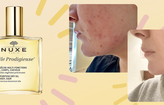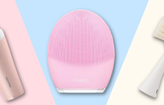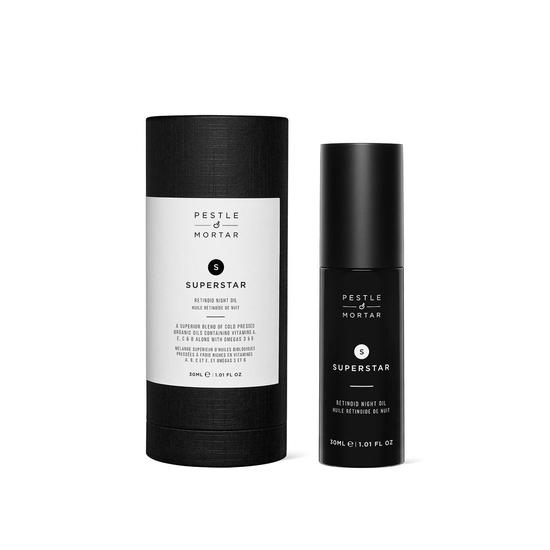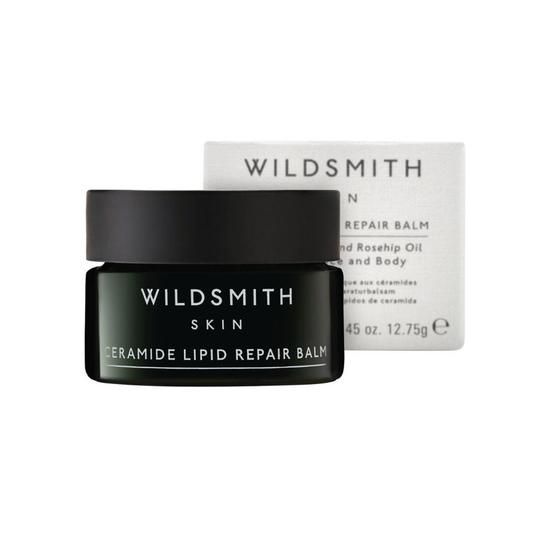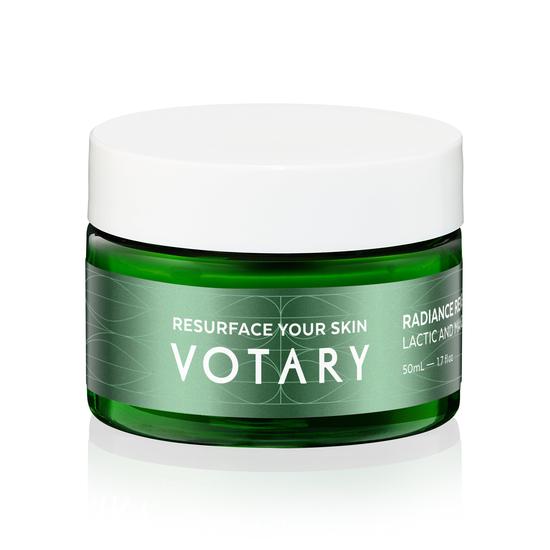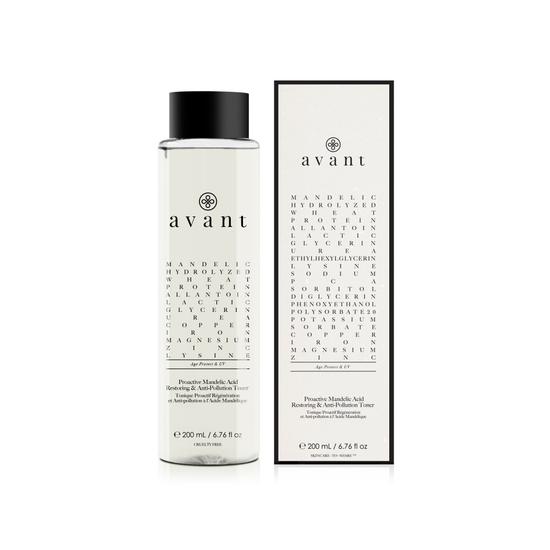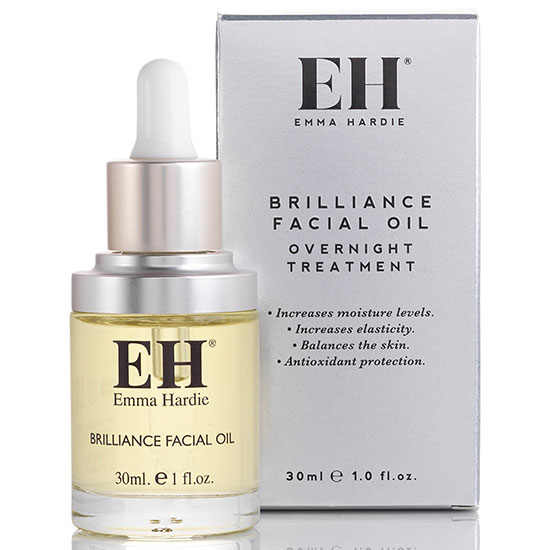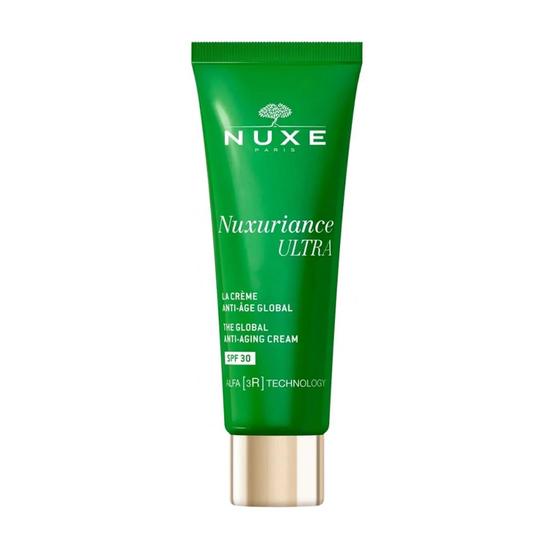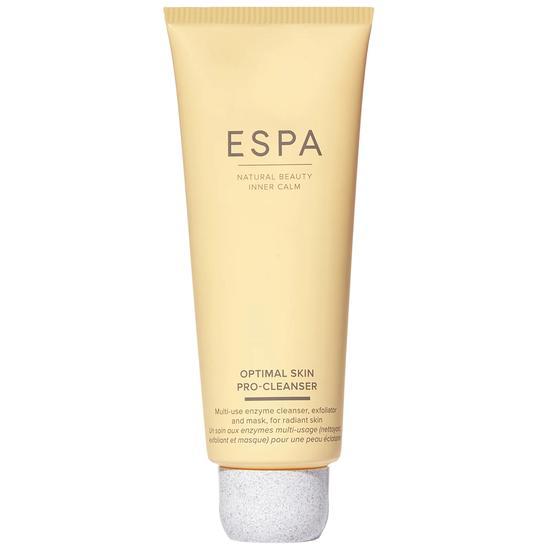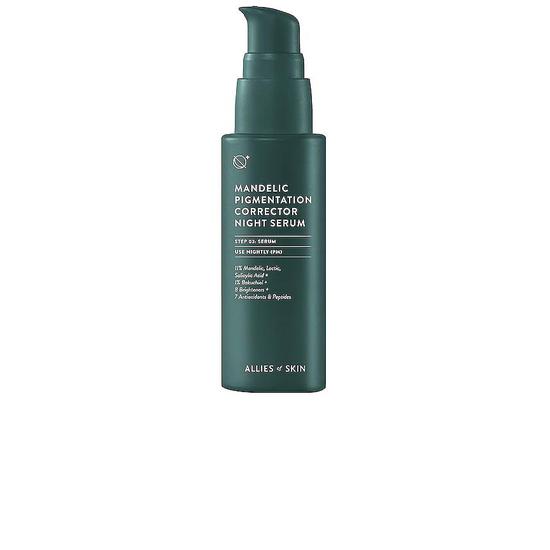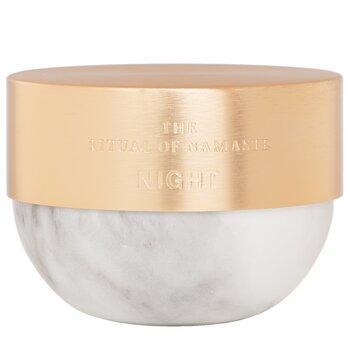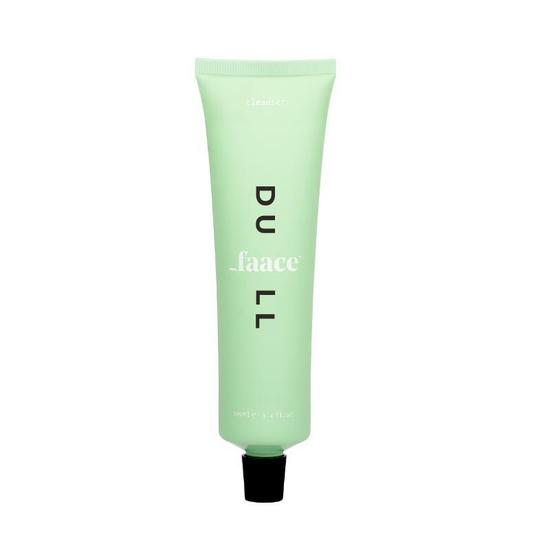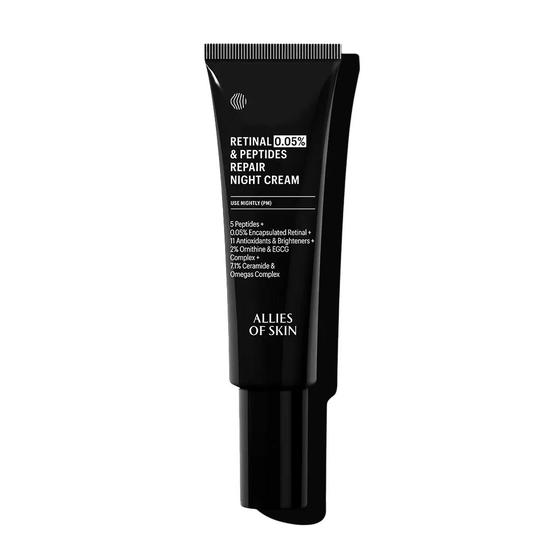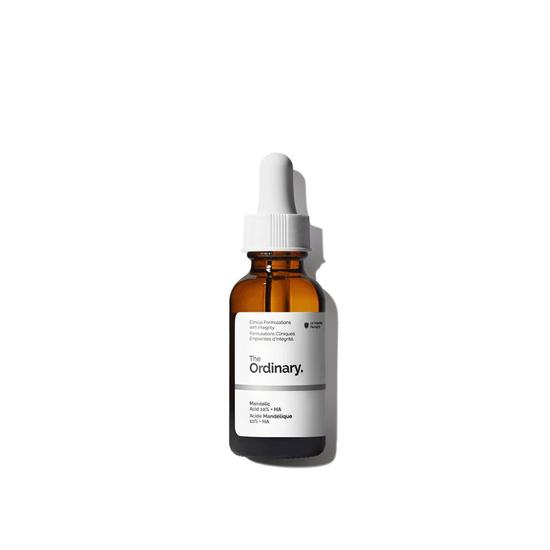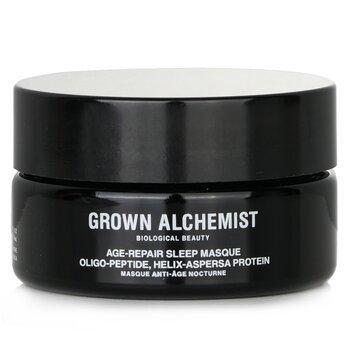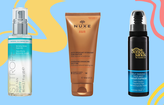
- Skin
- Mandelic Acid With Retinol
Can You Use Mandelic Acid With Retinol?
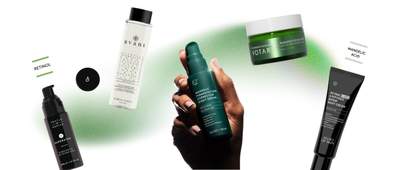
Both mandelic acid and retinol help to smooth skin, unclog pores, fade pigmentation, and target signs of ageing. Mandelic acid is an alpha-hydroxy acid (AHA) that gently exfoliates the surface of the skin, while retinol works deeper to boost cell turnover and stimulate collagen.
Can You Use Mandelic Acid With Retinol?
Yes—but with care.
Mandelic acid and retinol can be used together in a well-structured skincare routine—especially for those with experience using active ingredients and a focus on hydration and barrier support.
Both actives are good for exfoliation and skin renewal. Unlike combinations like glycolic acid and retinol, which are fairly intense and quite sensitising, mandelic acid’s slow penetration rate makes it less likely to cause problems when layered with retinol—especially if you’re already used to both ingredients. When layered thoughtfully, this combination can lead to clearer, more refined, and more even-toned skin.
That said, it’s still important to introduce them gradually, prioritise hydration, and avoid layering them on compromised or very sensitive skin.
The key to success? Start slowly, avoid overuse, and make sure your skin barrier is well supported. This pairing is often better tolerated than other retinol + chemical exfoliant pairings, thanks to mandelic acid’s slower absorption and lower irritation potential.
Why this combo works:
- Balanced resurfacing: Mandelic acid exfoliates the surface; retinol works below
- Gentler than other acid + retinol pairings: Less risk of peeling or barrier damage
- Targets multiple concerns: Acne, ageing, dullness, and pigmentation
- Supports consistent results: Improves product absorption and renewal rate
👉 Already know the benefits of each ingredient?
Jump To Routine
What does mandelic acid do for the skin?
Mandelic acid is a mild AHA derived from bitter almonds. Its larger molecular size allows it to penetrate the skin more slowly than other AHAs like glycolic or lactic acid, making it less likely to cause stinging or sensitivity.
It gently loosens the bonds between dead skin cells, promoting natural exfoliation. With continued use, mandelic acid can help smooth texture, brighten the complexion and reduce the appearance of dark spots.
Key benefits of mandelic acid:
- Gentle exfoliation: Smooths skin without harshness
- Brightens skin tone: Helps reduce dullness and uneven pigmentation
- Fades acne marks: Speeds up the fading of post-breakout discolouration
- Improves texture: Softens rough areas and boosts radiance
- Fights breakouts: Has mild antibacterial properties
Best for:
- Sensitive, reactive, or rosacea-prone skin
- First-time acid users
- Post-acne hyperpigmentation
- Uneven skin tone and mild congestion
Mandelic acid is often used at 5–10% concentration, and many people can tolerate it a few times a week—or even daily with the right product and support.
What does retinol do for the skin?
Retinol is a vitamin A derivative that works by increasing the rate of skin cell turnover. This makes it highly effective for reducing the appearance of fine lines, minimising breakouts, and improving texture and tone.
Unlike AHAs, which work on the surface, retinol penetrates deeper into the skin. It stimulates collagen production and helps regulate oil production, making it suitable for both ageing and acne-prone skin.
However, retinol is known for its potential to cause irritation, especially in the first few weeks of use—when redness, dryness, and flaking can occur.
Key benefits of retinol:
- Boosts collagen production: Improves firmness and elasticity
- Smooths texture: Helps reduce roughness and uneven tone
- Fights breakouts: Regulates oil and unclogs pores
- Fades pigmentation: Reduces sun damage and acne marks
- Minimises fine lines: Reduces visible signs of ageing
Best for:
- Mild to moderate acne
- Fine lines and wrinkles
- Textural issues and sun damage
- Dull or uneven skin
Begin with a low-strength retinol (0.25–0.5%) and increase slowly to minimise irritation.
Comparing mandelic acid and retinol side-by-side
| Benefit | Mandelic Acid | Retinol |
|---|---|---|
| Primary Function | Gentle AHA that exfoliates the surface to smooth, brighten, and clear pores | Vitamin A derivative that increases cell turnover and stimulates collagen |
| Exfoliation Type | ✅ Surface exfoliation – mild and even | ❌ Not an exfoliant but speeds natural renewal |
| Improves Texture | ✅ Refines and softens uneven texture | ✅ Smooths and resurfaces skin over time |
| Fades Hyperpigmentation | ✅ Brightens and helps fade post-acne marks | ✅ Reduces dark spots and uneven tone |
| Boosts Collagen & Firmness | ⚠️ Indirectly supports firmness through exfoliation | ✅ Stimulates collagen production for firmer skin |
| Treats Acne & Blemishes | ✅ Helps unclog pores and reduce breakouts | ✅ Keeps pores clear and improves post-acne marks |
| Hydration & Barrier Support | ✅ Gentle on barrier; suitable for drier skin | ⚠️ May dry or sensitise skin initially |
| Antioxidant Protection | ✅ Mild antioxidant properties | ✅ Provides some antioxidant support |
| Irritation Potential | ✅ Very low – gentle alternative to stronger acids | ⚠️ Can cause redness or peeling when overused |
| Suitable for Sensitive Skin | ✅ Excellent – one of the mildest AHAs | ⚠️ Start slowly; buffer with moisturiser |
| Best Time to Use | PM or 2–3 nights a week | PM only – always use SPF in the morning |
How to safely combine mandelic acid and retinol
✅ Option 1: Alternate nights (ideal for beginners)
This routine allows your skin time to recover while still benefiting from both actives.
Example schedule:
- Monday PM: Mandelic acid
- Tuesday PM: Hydration only
- Wednesday PM: Retinol
- Thursday PM: Rest or mandelic
- Friday PM: Retinol
- Weekend: Hydrating, barrier-repair routine
This method helps build tolerance over time and is suitable for most skin types.
For retinol nights...
For hydration nights...
For mandelic acid nights...
✅ Option 2: AM/PM split (for intermediate users)
If your skin is used to both actives and not showing signs of irritation:
- Morning: Mandelic acid → Moisturiser → SPF
- Evening: Retinol → Moisturiser
This allows each active to work without competition, while still being part of a daily routine.
A.M.
P.M.
✅ Option 3: Layering in the same routine (advanced users only)
If your skin is very tolerant and hydrated:
- Cleanse and pat skin dry
- Apply mandelic acid (wait 5–10 mins)
- Apply low-strength retinol
- Follow with barrier-repairing moisturiser (look for ceramides or peptides)
Do this 1–2 times a week maximum, and stop if you notice redness, peeling, or sensitivity.
Tips for success
- Introduce slowly: Let your skin adjust to one ingredient before adding the other
- Hydrate generously: Use moisturisers with ceramides, hyaluronic acid, or panthenol
- Use sunscreen every day: Both ingredients increase sun sensitivity
- Skip other strong actives: Avoid mixing with too many (or too strong) AHAs, BHAs, or vitamin C in the same routine, particularly if you have sensitive skin
- Listen to your skin: Tightness, redness, or flaking are signs to simplify and slow down
FAQs
Can I use mandelic acid and retinol at the same time?
Yes, if your skin is experienced and well-hydrated. Start with once a week, and monitor for irritation.
Should I use mandelic acid before or after retinol?
If layering, apply mandelic acid first and let it absorb fully before applying retinol. Always finish with moisturiser.
Is this combination suitable for beginners?
Not in the same routine. Alternate nights is a safer starting point until your skin builds tolerance.
Will this help with acne and pigmentation?
Yes—mandelic acid helps clear pores and fade marks, while retinol targets breakouts and deep discolouration.
What products should I avoid while using this combo?
Avoid additional exfoliants like glycolic acid, salicylic acid, or strong vitamin C in the same routine.
If you want to read more about AHA and chemical exfoliants, take a look at all The Best Chemical Exfoliators for Soft, Smooth Skin as discussed and recommended by us. When it comes to exfoliating, there's no one-size-fits-all approach, so make sure to read up on How To Exfoliate Skin According To Different Skin Types to get the best results for you.

Written by Maria Mukaranda
Maria’s background is rooted primarily in creative media and a love for all things written, expressed through experience both online and in print; for creative platforms spanning from music to fashion to beauty.
Top Posts

